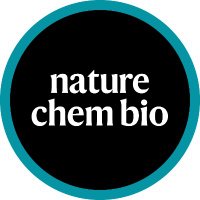
Nature Chemical Biology
@nchembio
A scientific journal devoted to publishing the most compelling research, opinion and analysis at the intersection of chemistry and biology.
ID: 25327370
http://nature.com/nchembio 19-03-2009 16:12:44
3,3K Tweet
24,24K Takipçi
575 Takip Edilen








Our latest work is out in Nature Chemical Biology Nature Chemical Biology and featured by Penn Engineering: We discovered new fungal RiPPs, aspergimycins, from Aspergillus flavus, with promising anti-leukemia activity via lipid modification. blog.seas.upenn.edu/penn-engineers…


Thrilled to see our work published in Nature Chemical Biology! Huge congratulations to Fumiya, Kota, Kazuhiro, and the incredible team🎉 “Insights into G-protein coupling preference from cryo-EM structures of Gq-bound PTH1R” doi.org/10.1038/s41589…

“A transposon-like strategy for proteins” - A News & Views by Barbara Di Ventura highlights recent work Science Magazine on using transposition, normally considered a DNA-based process, for protein semisynthesis and site-specific modification nature.com/articles/s4158…



A new Perspective by Anastasia Croitoru, Asuka Orr, and Alex MacKerell discusses how computational methods can be used to facilitate the early-stage development and optimization of antibody-drug conjugates nature.com/articles/s4158…



